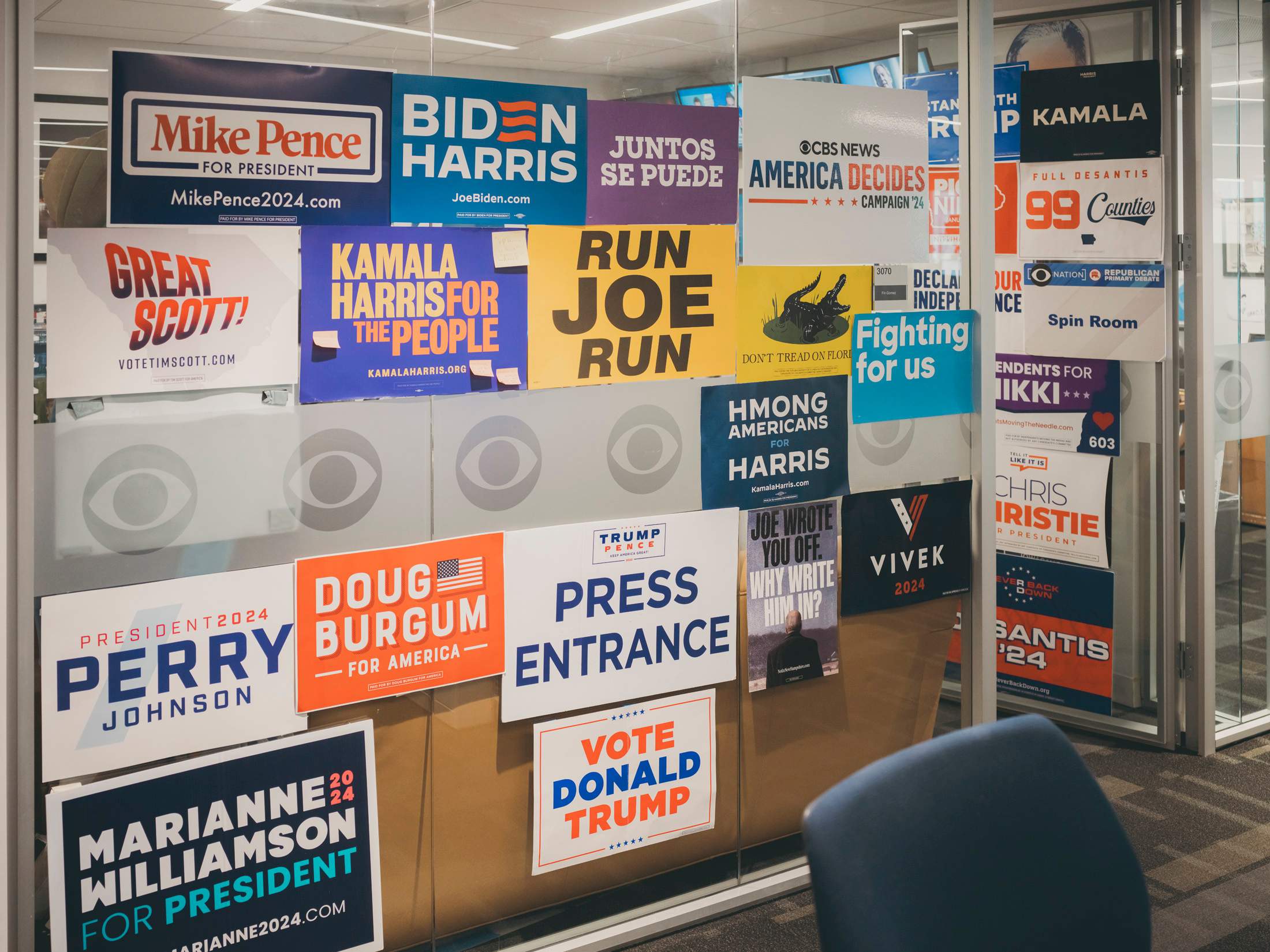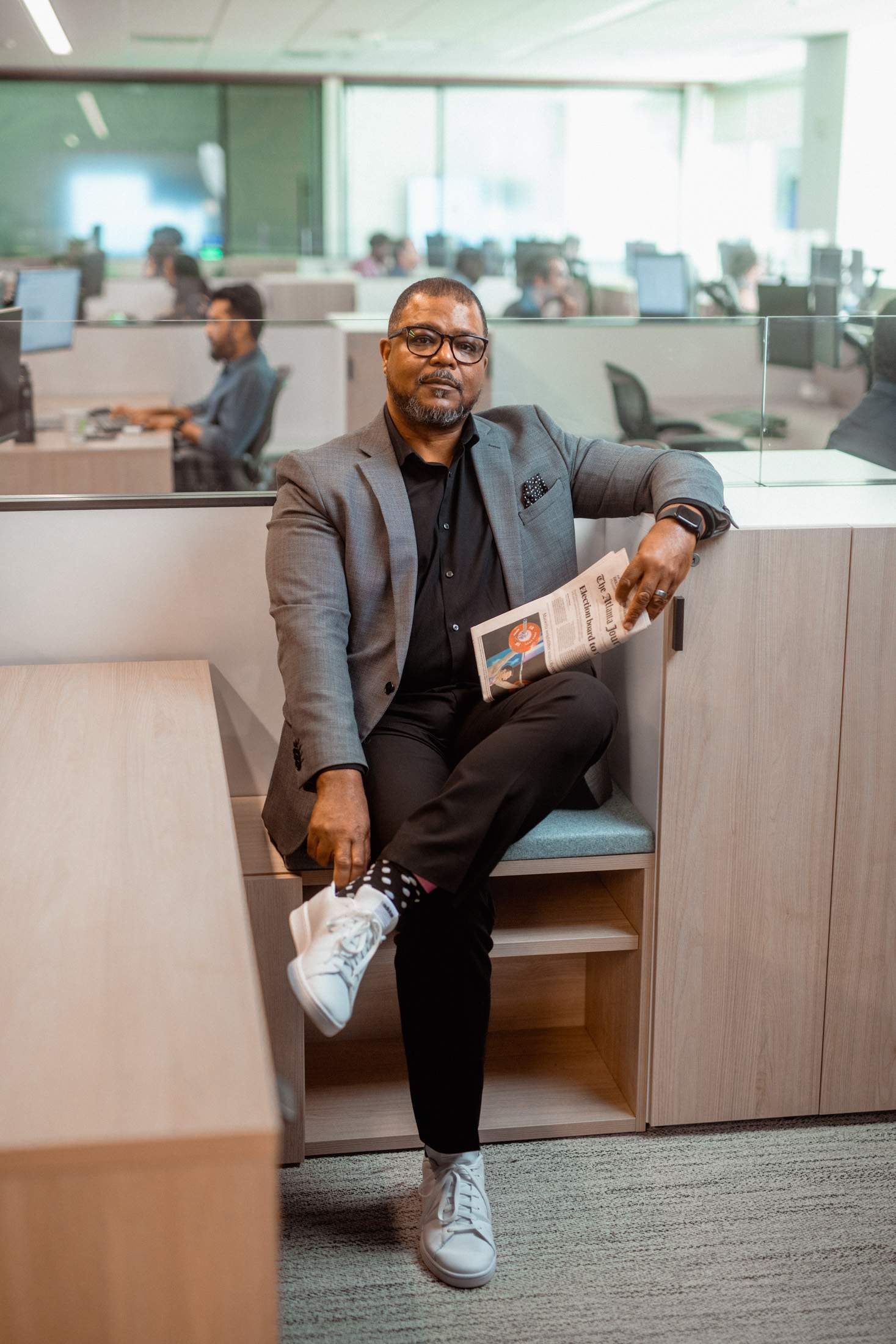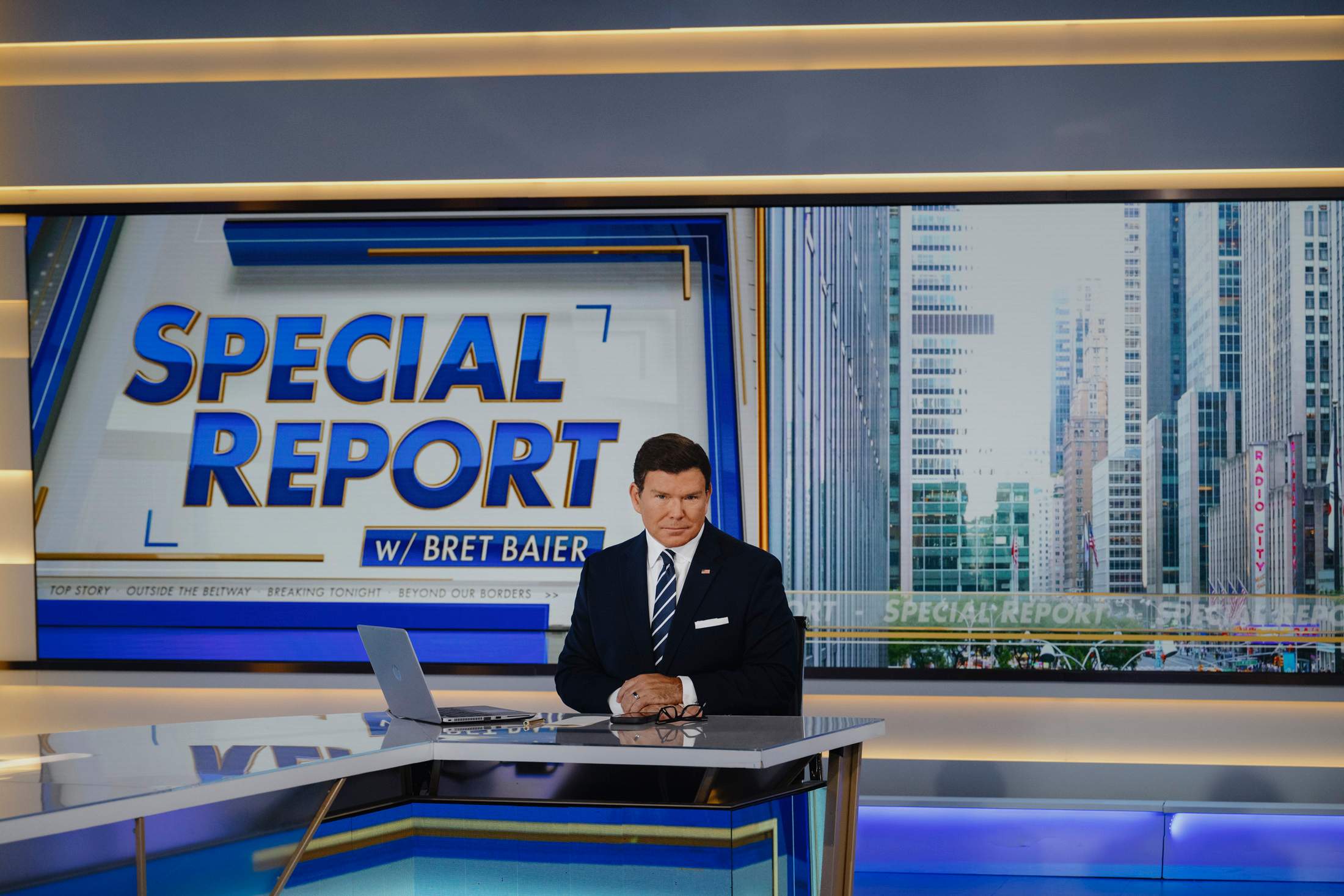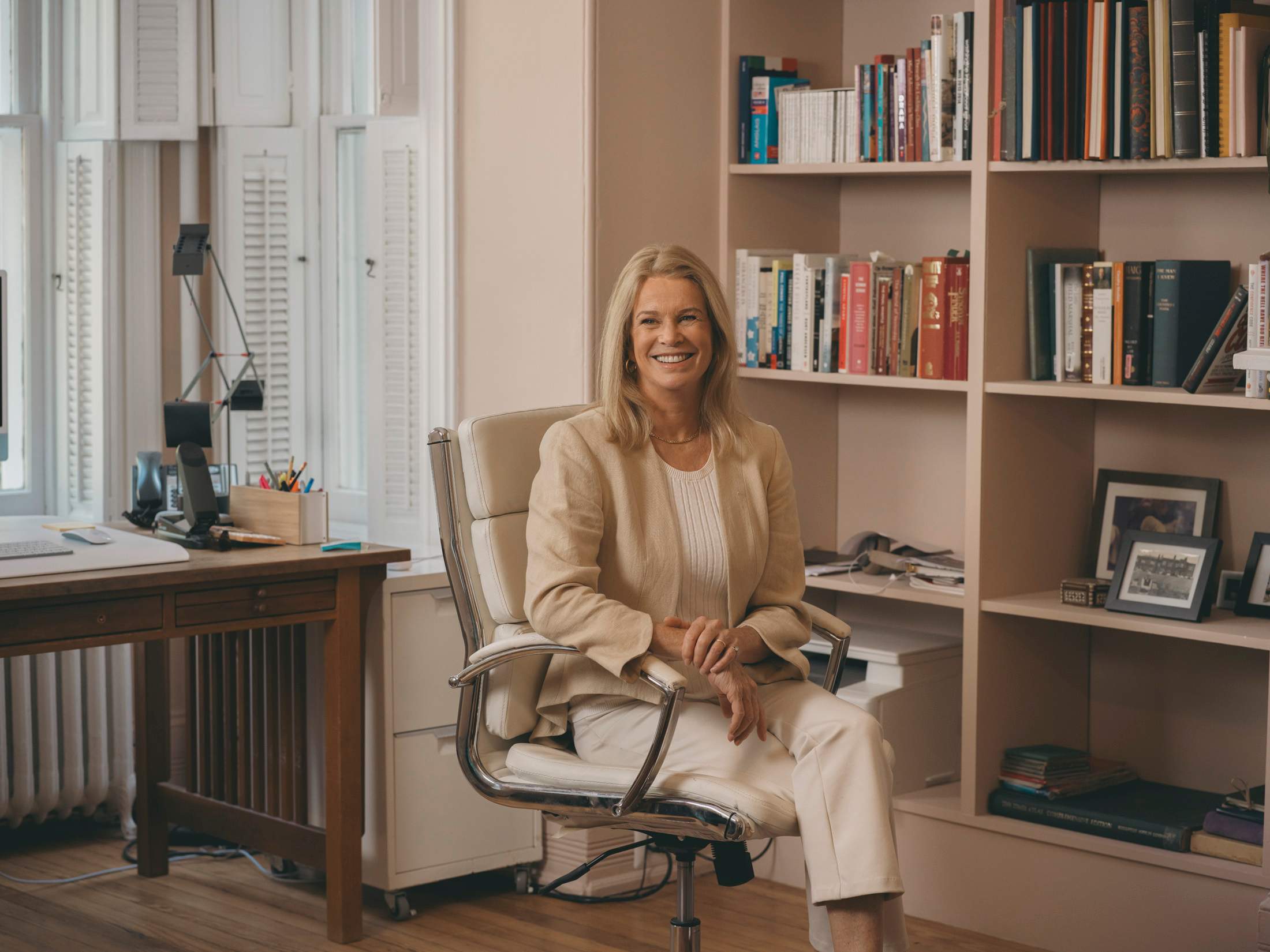Culture: Media / USA
View finders
Traditional news reporting is changing fast, yet despite the carnage wrought by the internet, many trusted journalists hold firm.
When former US president Donald Trump sat down with the billionaire Elon Musk for an interview earlier this year, things didn’t quite go to plan. Livestreaming on X, the feed wasn’t accessible for most viewers for the first 40 minutes. Then the two participants were stuck on mute. Ultimately, the whole thing ran to a rambling two hours. Musk blamed the glitches on a cyberattack, which is certainly possible. Yet the ad hoc production and discursive chat also underlined the teething troubles of these new, supposedly disruptive sources of where people get their news and views.
With a month to go until the US decides its next president, monocle spoke to five veteran journalists about how to cover such a twisting, turning election. We often hear that it is a tricky moment for legacy broadcasters and news outlets. That audiences are leaking to influencer interviewers and chatty online anchors, and trust in the trade is at an all-time low. Yet the journalists and teams we spoke to still command vast audiences, week-in-week-out, and they do so using old-school principles.

We travelled from newsrooms in the American South to studios in Washington via the Democratic National Convention in Chicago to see these journalists at work. There’s no doubt that news is changing, and many of our interviewees have also branched out into personal platforms like podcasts and newsletters. But, for now, much of the news is still as we knew it. —

1.
local hero
Leroy Chapman Jr
Editor in chief, ‘Atlanta Journal Constitution’
Atlanta is among the fastest-growing cites in the US, while Georgia, where Joe Biden won by 11,000 votes last time, is among the swingiest of the swing states. This gives the local paper outsize influence in this election. “This is also one of the fastest diversifying counties,” says Chapman. “This is what America’s going to look like in years to come.”
Chapman describes himself as a ‘rabid non-partisan’. “Our job is to bring light but not heat,” he says. “We can bring light to what makes the parties dysfunctional; what gets in the way of them serving the country.”
Ahead of this election, the AJC opened three new bureaux and is offering voter guides to the candidate options on local ballots across the state. “We have elections in 159 Georgia counties – for the sheriff, the district attorney, officials who stand a chance of having more impact on [Georgians’] lives than who ends up president,” says Chapman. With the loss or hollowing out of so many local outlets, people simply do not know who they’re voting for or who’s funding their campaigns. “There’s a lot of opportunity and public desire for that very basic information. It’s also what our democracy demands.”
The facts
‘Atlanta Journal Constitution’ founded: 1868 [as The Atlanta Constitution]
Circulation: 80,000-100,000 for weekday edition
Motto: “The Substance and Soul of the South”

2.
cool head
Bret Baier
Chief political anchor, Fox News
After Donald Trump was shot in the ear in July, Bret Baier was one of a select few reporters the former president called. Not that the long-standing Fox anchor is a toad for the former president; in fact, Baier was on the sharp end of a Trumpian online tirade last year after a grilling interview. “What you’re going to get from me is fair, respectful, but sometimes tough,” says Baier, whose face still has a hint of pancake makeup after recording his Special Report, which airs every weeknight at 18:00 Eastern time. “To do that with [Trump], who’s perceived to be more aligned with [Fox’s] opinion is, I think, a good thing for news.”
Baier has anchored the nightly slot since 2009. Among the network’s on-air talent, he has carved out a niche for doing less of the editorialising – and virulent anti-Democrat monologues – that characterises much of Fox’s output. “I’m trying to take the temperature down,” he says.
Once the network of conservatives, Fox executives say that in this election cycle more Democratic politicians want to come on air to reach crucial swing voters. Common Ground – a format that Baier himself came up with – brings together politicians from opposing sides of the House to talk through a piece of bipartisan legislation that they’re working through together. “Covering both sides [in this election], with the structure that we do, is a comfort for some folks and for that we [attract an] audience,” says Baier. He always presents the evening news in a starched collar and never drifts into the kind of animated outrage of some of his Fox colleagues. There is something pleasantly throwback about Baier’s evening news show: “I think there is hunger for the more formal way,” he says.
Baier has written extensively about former president Dwight D Eisenhower and the transition of power to the Kennedy administration that kicked off the 1960s and changed America forever. The most recent transition in 2021 was fraught, as Donald Trump famously refused to accept the result. How can the media do better if that happens again?
“I was on air that day and we did a pretty good job,” says Baier. “I think we could speak less to the extremes and get to that middle ground where people agree. There is a lot of space there.”
The facts
‘Special Report’ viewers: 2.9 million every night (July)
Increase in Democrats appearing on Fox this year: 41 per cent
Nightly sign-off: “Fair, Balanced and Unafraid”

3.
trusted host
Katty Kay
US special correspondent, BBC, and host, ‘The Rest is Politics: US’
Much like her current title at the BBC, Katty Kay’s role as US special correspondent, and her broader position in the American media ecosystem, is, well, somewhat special. It is rare for a non-American news broadcaster (Kay is British-Swiss), working for a foreign newsroom, to be as close to a household name as Kay has become, since she began reporting from Washington in 1996.
Kay’s journalism has cut across the loose partisan lines that characterise much of the US broadcast news landscape. This, she says, is because her reporting and analysis is tethered to her deep contacts with political figures on either side of the political divide, rather than being informed by a political agenda of any given stripe.
“Maybe it is because I’m an outsider; I actually don’t have an American passport,” she tells monocle. “But I’ve been covering American politics for 20 years, and it has taken a long time, but I have built up a reservoir of trust with the people that I speak to. And whether I talk to people through podcasts, on television, or in print, I know that my audience is following me where I am going.”
It is in that spirit of seeking trustworthy perspectives on the upheavals of a dramatic US presidential election that has drawn listeners in their millions to Kay’s latest venture, weekly politics podcast The Rest is Politics: US. The show is produced by the UK-based podcast studio Goalhanger, and Kay acts as co-host alongside former White House communications director Anthony Scaramucci.
“It’s interesting with podcasts, because everyone bemoaned the fact that we had an attention deficit disorder – yet here are people happy to listen to a discussion for 30 or 40 minutes,” says Kay. “And these are young audiences who are happy to take the time to listen to something deeply and thoughtfully. We’ve broken down some of the hierarchy of the media – it’s gone.” Listeners respond to a format that allows discussions to flow more freely. “The days where somebody could just sit behind a desk and present the dry facts – that’s not good enough anymore. The onus is on us to deliver information in a way that our audiences want. And they want to know that they’re spending their time with someone they trust.”
The facts
First international posting: Zimbabwe in 1990 before postings in London, Tokyo and Washington
Number of US elections covered: Nine
‘The Rest is Politics: US’ downloads: 18 million since launch

4.
latino voice
Maria Hinojosa
Executive producer of ‘Latino USA’ and founder of Futuro Media
When the Pulitzer-prize winning radio host and producer Maria Hinojosa emigrated to the US from Mexico as a child in the 1960s, the US’s southern border was not as politically fraught as it is today. “I grew up at a time when immigrants were actually sought-after in this country,” Hinojosa says. Her father Raúl, a doctor, was invited to join a research team at the university of Chicago, which would go on to devise the world’s first cochlear implants. “It was a time when the brain drain of other countries was a ‘brain gain’ for the United States,” she adds.
Among the rituals the Hinojosa family adopted upon their arrival in Chicago’s south side was to tune in to the nightly news. “Television was our source of understanding the US as new immigrants,” Hinojosa says. “But I never saw myself reflected [on, or in, the news] in any way.”
So, in 1992, when Hinojosa was invited to host Latino USA – the first English-language news programme devoted to Hispanic affairs on US public radio – she jumped at the chance. Broadcast each week on more than 240 public radio stations across the country, Latino USA is now America’s longest-running radio programme of its kind. The show’s stories and investigations reflect multiple aspects of life among the US’s second-largest demographic group. Hinojosa’s deftness during interviews, plus her ability to move nimbly between subjects, attracts high-profile guests – including vice president Kamala Harris, who sat down with her for an interview last September.
But despite also being one of the fastest-growing demographics, Hinojosa argues that the US’s Latino communities are still covered in broad brushstrokes in much of the mainstream press. Shows like Latino USA, as well as the documentaries and podcasts produced by Futuro Media, the production studio Hinojosa established in 2010, aim to chronicle the US’s Latino populations with a nuance often absent from news coverage elsewhere. “This is a danger, because Latinos and Latinas are the swing votes within the swing states. To not acknowledge the power of those votes, and to not help educate Latino voters and, indeed, the entire country, about the power of the Latino vote – that is a problem. And it’s just bad journalism.”
The facts
Launch of ‘Latino usa’: 1993
Recent reports: Press freedom in Venezuela; Mexico’s election; and Palestinian solidarity movements in Latin America
On air greeting: “Now, dear listener...”

5.
calm hands
Mary Hager
Executive producer of ‘Face the Nation’ at CBS
The mantra at Face the Nation’s first editorial meeting of the week is, “It’s only Wednesday.” This means that everything is still to play for until showtime on Sunday morning: never settle on a lead interview too early, hold your nerve, be prepared to rip up the running order on Saturday night. It’s a crucial news instinct in an election of handbrake turns and is instilled in the team by executive producer Mary Hager. She has shepherded the show for the last 14 years and has been at cbs for 30 years. Alongside her team of producers, Hager decides who gets grilled each week – usually one or two politicians – and which news lines to pursue along with in-house analysis. “The bottom line is this: how are Americans going to vote and what do we need to do – what do they need to know – to help them make up their minds?”
It’s been a rocky few years for America’s news networks amid declining audiences and shrinking newsrooms. cbs was not immune to this. Yet Face the Nation, 70 years on since it first aired, remains the most-watched show in the crucial Sunday morning spot. As networks battle for attention with discursive podcasts and livestreamed influencer chat shows, the programme has not budged from its undiluted format that typically puts newsmakers in a tight spot.
Armfuls of lanyards hang from a hook on the wall of Hager’s office in Washington, alongside the relics, flags and flyers of past conventions and caucuses. Colleagues say the EP embodies her own mission statement of “News not noise.” While many journalists talk about the unprecedented nature of what’s currently unfolding in American politics, Hager has seen dramatic upsets before: “The biggest challenge has been staying away from what we call the ‘bright shiny objects’,” she explains. “These are the grenades that are thrown by either campaign: the campaign staff shakeups and all the insider stuff.”
She says this election is happening while public distrust in government is increasing. “Our role is to present [officials] as government, push them, challenge and question them but still respect them,” says Hager. “It builds trust in us. If we’re going to take elected officials seriously and give them respect, then hopefully that will trickle down to the public.”
The facts
First aired: 1954
‘Face the Nation’ viewers: 2.8 million per year
How many elections Mary Hager has covered: 17


